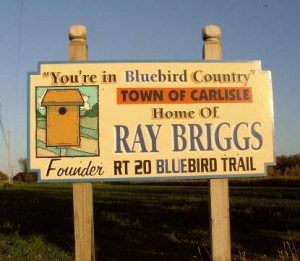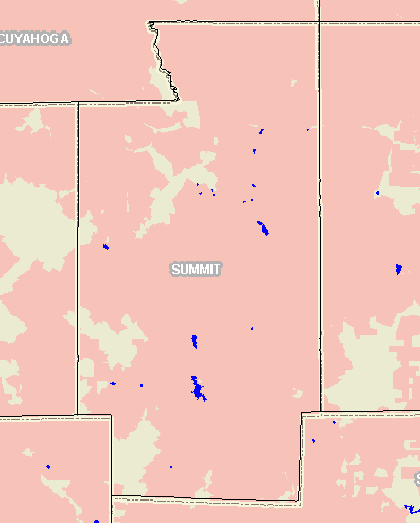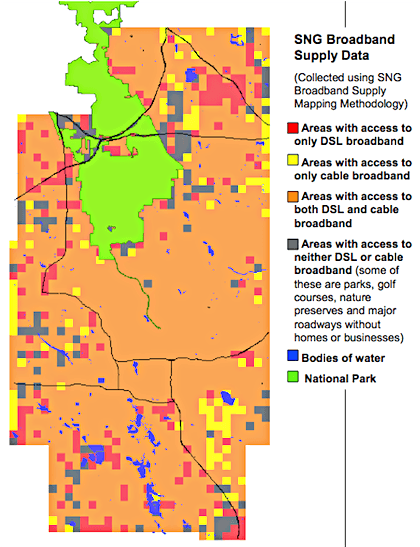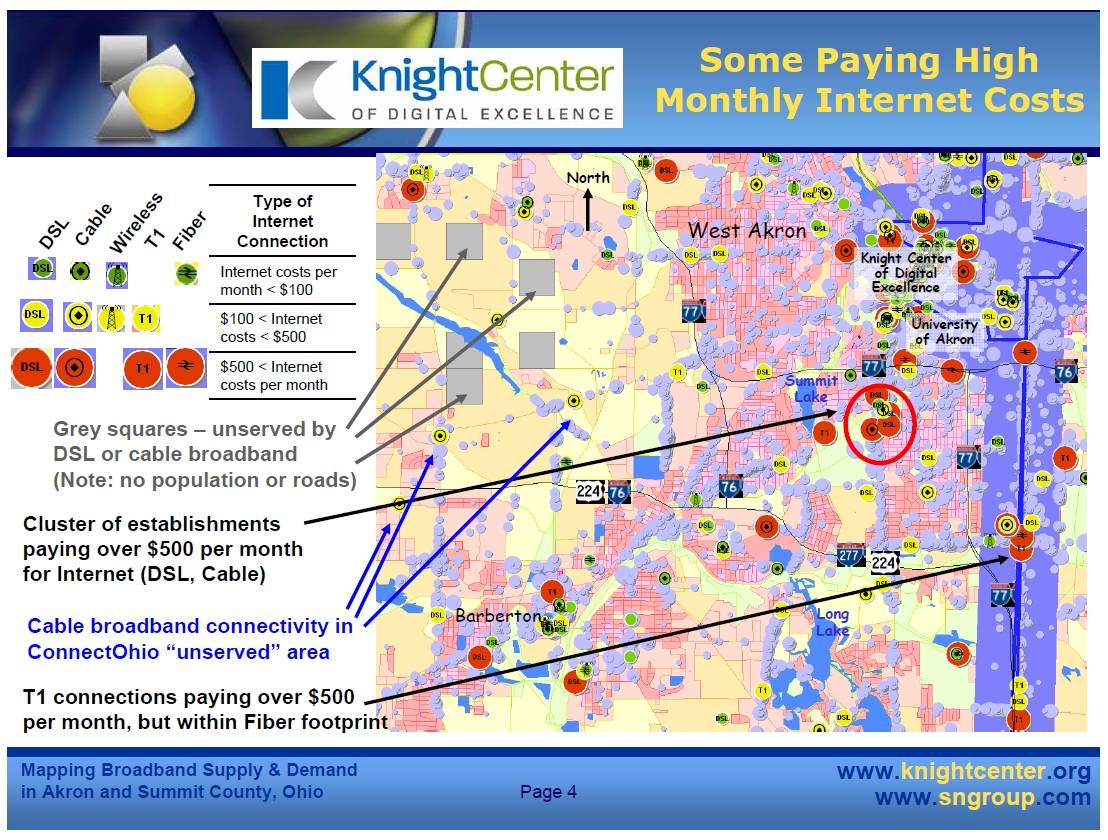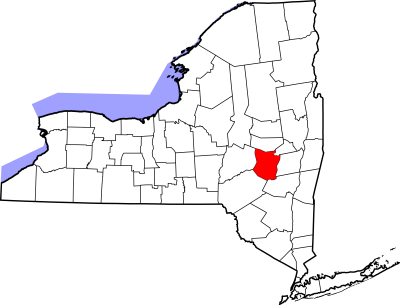
Schoharie County, New York
Schoharie County has the dubious distinction of being one of the New York counties least well-served with high speed broadband service. In fact, according to the Schoharie County Telecommunications Task Force, our county is ranked last in the Capital Region, located in and around the state’s capital city Albany.
Last fall the Task Force concluded that almost half of the county’s residents had no access to broadband service at all, a point since disputed by one of the local telephone companies providing service to parts of the county, but regardless of who has access, residents are accustomed to taking whatever broadband service they can get.
Schoharie County has just over 31,000 residents across its 622 square miles. It’s a beautiful place to live, especially along the southern parts of the county which lie within the Catskill Mountains. Several small towns, villages and hamlets dot the county, providing a rural lifestyle but within easy reach of Schenectady and Albany. Unfortunately, part of living in rural upstate New York is recognizing the reality of the digital divide.
To our east, our bigger city neighbors enjoy access to Verizon fiber-based networks and Time Warner Cable’s Road Runner broadband service. Broadband is fast, plentiful and relatively inexpensive. But once pastures replace strip malls, it’s an entirely different story.
In much of Schoharie County, broadband service is provided by locally owned Middleburgh Telephone Company, which has been serving most of our area for over 100 years. A few dozen employees cover everything from billing to repair and installation, and not just for telephone and broadband service, but also for cable television. Midtel Cable TV, owned by the telephone company, serves many areas the bigger cable companies forgot.
Unfortunately, Middleburgh Telephone controls broadband, which means instead of providing cable broadband over Midtel, customers in much of Schoharie County are stuck with old-fashioned DSL service delivered by telephone lines.
While the hometown feel of the local phone company makes you feel like a valued customer when you deal with them, the broadband products they offer leave a bitter taste in your mouth. MIDTEL.NET customers can look forward to an either/or proposition. Either endure painfully slow DSL service or pay an exorbitant amount of money for the kind of broadband service speeds commonly available in larger communities.
MIDTEL.NET Price Chart
DSL – mSPEED Lite: $29.95/month — 384kbps download, 128kbps upload
DSL – mSPEED: $43.95/month — 3Mbps download, 500kbps upload (Prepay discount: 6 months – $250.00 or 12 months – $495.00)
DSL – mSPEED Plus: $59.95/month — 5Mbps download, 1Mbps upload (Prepay discount: 6 months – $340.00 or 12 months – $670.00)
DSL – mSPEED Premium: $164.95/month — 10Mbps download, 1.5Mbps upload (Prepay discount: 6 months – $940.00 or 12 months – $1,850.00)
While most residents are grateful for the optional higher speed services our friends and neighbors in other rural communities simply don’t have, the pricing makes it unaffordable for the vast majority of residents, who typically make due with the mSPEED $43.95/month service.
Of course, those speeds are not guaranteed. Because I reside more than 10,000 feet from the local telephone company central office, I cannot really access any service plan above 3Mbps. The higher speeds simply would not work.
To our north, Frontier Communications provides telephone and broadband service to residents in Fulton, Herkimer, Clinton and Essex counties, as well as the western part of Montgomery County and parts of northern Saratoga County. Frontier has taken ownership of several formerly independent telephone companies in eastern New York, as well as a few formerly owned by Rochester Telephone. Frontier actually does a better job than Verizon in rural parts of upstate New York in providing at least some type of broadband service. Large sections of the state still served by Verizon have no DSL or any other kind of broadband service. Frontier does seem to pride itself with providing residents with broadband service, but not always consistently.
Stratford, Lassellsville, and Oppenheim, all within Fulton County are three communities with significant gaps. All are within or adjacent to the Adirondack Park, which covers a section of the Adirondack Mountains. At one point, several bypassed residents in Fulton County signed a petition and presented it to local Frontier officials, convincing them enough customers were willing to purchase the service to make it available to that neighborhood.
Frontier and Middleburgh Telephone both share an attitude of requiring a “critical mass” of potential customers to make it worth their while to provide DSL service. Unfortunately, that cannot come fast enough for many underserved communities, whose local governments receive a steady stream of calls from residents wondering when broadband service will become available in their area.
Where Frontier does provide DSL service in rural upstate communities, it’s slow and expensive.
Frontier’s website for most of Fulton County shows two service plans available:
Frontier Communications DSL Price Chart
Frontier High-Speed Internet Lite – 768kbps $39.99 per month
Frontier High-Speed Internet Max — up to 3Mbps $49.99 per month
That pricing is before a $5 a month “modem rental fee,” and as least as much for taxes and surcharges. Add at least $10 to the quoted price to cover all of these fees. Frontier also likes to commit its customers to term commitments. My friends in Frontier service areas are strongly pushed towards one, two, or even three year “price protection plans”, as well as a backup and support service called “Peace of Mind” which can add another $13 a month to your bill. Certain promotional bundle pricing can lower some of these costs, but not enough to erase the disparity in pricing between rural broadband service, and that provided in larger cities within easy driving distance.
The impact of unavailable or unaffordable broadband service can be severe, subjecting rural communities to economic disadvantages including:
- an inability for local small businesses to operate and/or maintain online websites to market products and services to customers;
- educational institutions are unable to effectively teach our children how to navigate the critically important online world;
- the impossibility of attracting high technology business and industry into underserved communities;
- a reduction in the quality of information and service available in rural public libraries;
- making life difficult for home-based teleworkers or telecommuters who conduct some/all of their employer’s work from home;
- a reduction in property values by reducing competition for available properties rejected by potential buyers because of lack of broadband access;
- a loss of potential innovation and online business start-ups because of lack of access;
- information disparity for residents unable to access online information the rest of the wired nation takes for granted.
So why do providers not provide universal access? It’s a good question for some opinion leaders in this part of the state.
Anne Myers, the provost at SUNY Cobleskill, a state university, told the local newspaper that “Broadband is like rural electrification — it’s necessary for areas to move forward. There are things you can’t do if you don’t have broadband.”
Myers advocates for the same guarantee of access to broadband that Americans were given for electricity from the Roosevelt Administration’s electrification programs of the Tennessee Valley Authority and the Rural Electric Administration. Indeed, she could benefit from it, because her home in Summit, in Schoharie County, has no access to broadband either.
Unfortunately, the New York State Public Service Commission (NY PSC) has been less than aggressive in advocating for such an approach. In fact, it has adopted a “free market” strategy and has become complacent and tolerant of the results: slow and expensive rural broadband, if it’s available at all.
The Public Utility Law Project of New York, a group advocating for universal access, has heavily criticized the NY PSC for what it calls, “in essence [arguments] for continued reliance on failing market-based policies, policies which exacerbate the digital divide and have left millions of households without broadband. A review of other comments filed with the FCC reveals that New York is behind the times and out of step with every other state that submitted comments [to the Federal Communications Commission].”
Lou Manuta, who writes for the PULP Blog, went much further:
Essentially, the PSC seems to be saying that policy makers elected by the people who see the importance of universal affordable broadband to the future of the economy and society should not disturb the results of the broadband “market” – which in most localities is a duopoly of landline and cable providers. Such blind faith in the market, however, has already left New York far behind countries that have been proactive with policies to lower the cost of broadband, increase speed and bandwidth, and increase its deployment and actual use by citizens. The PSC even questioned the need to bring broadband to every citizen today:
A broadband plan seeking to bring broadband immediately to 100 percent of the country may be ill-advised. A goal of 100 percent broadband deployment may not be economically rational with traditional, wired service. However, the evolution of technology, like third generation wireless, could provide more efficient and cost effective alternatives for ubiquitous broadband.
This is a familiar refrain to defend market power of existing providers: someday the market will bring providers with a new technology that magically would bring affordable service to unserved or underserved areas, so therefore regulators and government should do nothing.
Groups that provided comments similar to those of the PSC were free-market think tanks, such as Americans for Prosperity, FreedomWorks Foundation, and Americans for Tax Reform (ATR). ATR, founded by anti-tax radical Grover Norquist. The PSC’s positions closely resonate with the comments of ATR, which glossed over the market failure and reduced competitive position of the United States in comparison to other countries, and wrote:
We are on the right track; the free market is working. Consumers are enjoying an ever-expanding array of choices and performance. . . . In order for free-market models to provide for the further development of broadband access, however, it is absolutely critical that government intrusion not prevent private capital from recouping its investment. If private capital becomes convinced that its ability to recoup its investments is less likely, it will be less likely to make the significant investments in broadband that is the very goal of this FCC inquiry.”
Both the PSC and ATR take these “hands off” positions when it comes to the price and deployment decisions of the cable and phone company duopoly, even though
- millions of people who in theory have “access” to broadband cannot afford it,
- the U.S. has some of the world’s slowest, most costly broadband (per megabit per second),
- the U.S. subscribership rate has sunk from 4th to 15th in the world in recent years, even as other countries with more affirmative broadband policies surge ahead.
So what precisely keeps broadband providers from providing universal access and wiring all of their customers? Profit and return. The costs to construct extensions of their networks to reach even the most isolated customers isn’t worth the potential return, say most providers.
Before the Obama Administration turns on the broadband stimulus faucet, the emergency federal economic stimulus package provided more than seven billion dollars for “shovel-ready” construction projects across the nation. More than $175 million is targeted for New York state. Despite Albany’s usual circus-like chaos, dysfunction, and a recent state Senate coup d’etat, Governor Paterson, the Senate and Assembly managed to identify 32 broadband projects that could be eligible for grants from the federal fund. Competition for “free money” from everyone from educational groups to telephone companies to local municipalities is fierce, and will only grow more so when the federal broadband stimulus money begins to flow.
Both Frontier and Middleburgh Telephone believe federal stimulus funding may help improve the viability of reaching their most rural communities.
Middleburgh Telephone is even willing to partner with municipalities to provide service to areas it does not reach today, such as in Carlisle and Esperance.
But just as important as availability, according to Lou Manuta with PULP, is affordability. Even where broadband is plentiful and less expensive than in rural areas, it’s still out of reach for many of New York’s poorest residents. Manuta advocates providing special “Lifeline”-type broadband packages to disadvantaged state residents, which offer very basic broadband service for a very low price.
For residents in rural New York, change cannot come soon enough. Without it, even big states like New York will leave hundreds of thousands of residents behind, stuck with slow broadband at unaffordable prices.
Jenny Pirro comes to Stop the Cap! as a consumer concerned about broadband service in rural communities. She is a lifelong resident of upstate New York, recently retired from a career in banking. She has been a customer of both Middleburgh Telephone and Frontier Communications. For privacy, Jenny chooses to write under her maiden name.


 Subscribe
Subscribe
